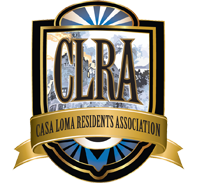[Includes properties facing Wells Hill Avenue between Lyndhurst Avenue and Austin Terrace and on Nina Street from addresses 2-40 and 1-41]
There are 69 contributing and 4 non-contributing properties in the proposed Well Hill Avenue HCD.
Wells Hill Avenue is an excellent example of an early 20th century upper middle class urban street reflective of garden suburb principles that has maintained its integrity, authenticity and coherence. Architectural styles and building typographies vary, and include examples of early 20th century housing styles, including Edwardian, Arts & Crafts, English Cottage and Bungalow. The two “communal gardens” on the street, created by groups of houses that are substantially set back from the road on the west side of the street north and south of Nina Street, support the area’s unique and distinctive character. The side yard setbacks give each home a strong individual identity and reinforce the bucolic landscapes and streetscape. The perceived “communal garden” between 18-30 Wells Hill Avenue is a clearly defined space created by 6 properties on the west side of the street with very deep front yard setbacks. While the front yard setbacks on the east side of the street are far shallower, their trees help unify both sides of the street reinforcing the enclosed and intimate garden setting. The mature tree canopy on the street creates a green backdrop to the houses.
The pitched roofs and dormers, brick cladding with stone, wood and stucco accents, front porches and expressed entrances, 2 to 2.5 storeys and general 3:1 solid to void ratio create a visually cohesive historic landscape.
There are two properties in the proposed Wells Hill Avenue HCD that already have Part IV designation: The Dinwoody House at 51 Wells Hill Avenue and the Denison House at 72 Wells Hill Avenue.
The HCD will (i) ensure complementary alternations to contributing properties, (ii) ensure new development and additions conserve and enhance the garden suburb character including the tree canopy and front yard setbacks with extensive gardens and landscaping, (iii) ensure harmony of materials and architectural features between old and new including type, colours, scale, finishes and details and (iv) encourage high quality architecture in the design of new development and additions that is complementary to the HCD’s cultural heritage value.
